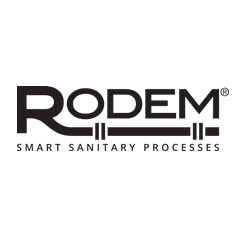Menu

There are a variety of factors to consider when selecting a strainer for your processing facility that go beyond making sure the holes are small enough to catch what you want to catch. This article will give you some basics to help select the correct strainer, ensuring product quality and sanitary process equipment security.
Strainers are a low-cost and proven way to separate liquids and solids, and promote sanitation. There are various configurations, but the basic strainer options include Tee-Line Strainer Inserts and Angle-Line, Straight-Line and Y-Strainers.
Tee-Line Strainer Inserts are designed to prevent damage to food grade pumps and other sanitary process equipment. Food grade pumps are typically engineered to allow certain sized particulates to pass without causing damage. Knowing your pump limitations is critical in strainer selection. Clogged strainers and damaged impellers can halt your process. If you are unsure of product specifications, ask your distributor or check the manufacturer’s specs. Partnering products with compatible performance properties ensures smooth, sanitary processing operations.
Angle-Line, Straight-Line and Y-Strainers are used to strain product and to protect spray devices and heat exchangers from harmful solids. Strainer element options, such as wedgewire, perforated, mesh overlay and filter bags, help you to achieve the desired final product and ensure you comply with industry regulations for your process.
Wedge Wire or Perforated?
|
Use Wedge Wire for: Wedge wire straining and filtering
|
Use Perforated for: Perforated 3-a straining
|
|
|
So what else do you need to know to find the strainer that best optimizes your process? There are a few critical elements to selecting the right option:
Selecting filtration elements that are properly designed for your application can be trickier than what initially meets the eye. Choosing an incorrect element can create downstream disasters for sanitary process equipment if it does not capture the right amount of solids. When properly selected and installed, sanitary strainers offer outstanding precision and minimal operating costs. Consult a strainer distributor to ensure you are making the right choice!
**Special thanks to our strainer partner Sani-Matic for providing us with content contained in this article. See more about Sani-Matic and their line of sanitary cleaning equipment here.**

E-mail: [email protected]
Copyright 2024 Rodem Inc. All rights reserved.